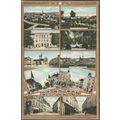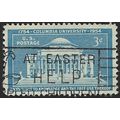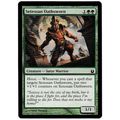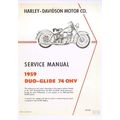Cardigan, Ceredigion - The Quay - Colourmaster postcard c.1970s
- Condition : Used
- Dispatch : 2 Days
- Brand : None
- ID# : 182517543
- Quantity : 1 item
- Views : 165
- Location : United Kingdom

- Seller : justthebook (+1703)
- Barcode : None
- Start : Mon 10 Jun 2019 13:48:36 (EDT)
- Close : Run Until Sold
- Remain : Run Until Sold
Checks/Cheques
 for 1 item(s) edit
for 1 item(s) edit
Shipping Calculator
More Listings from This Seller view all
Seller's Description
- Postcard
- Picture / Image: The Quay, Cardigan [Ceredigion]
- Publisher: Colourmaster International (Photo Precision) PT28156
- Postally used: no
- Stamp: n/a
- Postmark(s): n/a
- Sent to: n/a
- Notes / condition:
The Guildhall, built from 1858–60, was erected on the site of the 1804 grammar school, and that of a house and coach-house owned by Abraham Morgan, with open ground behind. The cost of building was £1,880-5s-0d for the front buildings, and £2,174-15s-0d for the markets.[6]
By the mid 19th century there were more than 60 taverns in the town. The port, though had begun a decline hastened by the coming of the railway in 1886.[4] The river silted up and larger vessels could no longer reach the port, which had largely become inactive by the early part of the 20th century. Plans for dredging came to nothing.
Please ask if you need any other information and I will do the best I can to answer.
Image may be low res for illustrative purposes - if you need a higher definition image then please contact me and I may be able to send one. No cards have been trimmed (unless stated).
------------------------------------------------
Postage & Packing:
Postage and packing charge should be showing for your location (contact if not sure).
No additional charges for more than one postcard. You can buy as many postcards from me as you like and you will just pay the fee above once. Please wait for combined invoice. (If buying postcards with other things such as books, please contact or wait for invoice before paying).
Payment Methods:
UK - PayPal, Cheque (from UK bank) or postal order
Outside UK: PayPal ONLY (unless otherwise stated) please. NO non-UK currency checks or money orders (sorry).
NOTE: All postcards are sent in brand new stiffened envelopes which I have bought for the task. These are specially made to protect postcards and you may be able to re-use them. In addition there are other costs to sending so the above charge is not just for the stamp!
I will give a full refund if you are not fully satisfied with the postcard.
----------------------------------------------
Text from the free encyclopedia WIKIPEDIA may appear below to give a little background information (internal links may not work) :
*************
Cardigan (Welsh: Aberteifi) is a town in the county of Ceredigion in Mid Wales. It lies on a tidal reach of the River Teifi at the point where Ceredigion meets Pembrokeshire. It was the county town of the historic county of Cardiganshire and is the second largest town in present-day Ceredigion.
The settlement at Cardigan was developed around the Norman castle built in the late 11th or early 12th century. The castle was the location of the first National Eisteddfod in 1176 and in 2014 was undergoing restoration. In the 18th century the town became an important port which had declined by the early 20th century.
The population in 2001 was 4,203, reducing slightly to 4,184 at the 2011 Census. Modern Cardigan is a compact and busy town with most facilities for retail, education, health, worship and sport.
The town is strategically placed on the banks of the River Teifi. A castle was built by Robert Montgomery in 1093 after the Norman army conquered Ceredigion, but the area was regained by the Welsh in 1136 after a victory against the Normans at Crug Mawr, with the town holding out until 1164. Under Welsh rule a castle was built in stone with a walled settlement around it and in 1176 Lord Rhys instituted the first eisteddfod. Contestants came from all over Wales, England, Scotland and Ireland to compete for chairs in music and poetry. In 1199 the town received its first charter and became an important trade centre. In 1227 a weekly market was established which continues to this day.[2][3]
Welsh rule over Cardigan continued, for some periods under royal lordship, until it was annexed to the English crown in 1283 when the country of Cardiganshire was created. The town wall was built in the 1240s and the castle was rebuilt. St Mary's Church was established as a Benedictine Priory and parish church in mediaeval times and survived the Dissolution of the Monasteries. The castle ceased being the administrative centre of the county with the Act of Union in 1536 and by the early 17th century was already falling into ruins.[3]
Until the 16th century, Cardigan had been a small, walled town with some river traffic. With Wales formally annexed by England through the instrument of the Laws in Wales Acts 1535–1542, political and domestic stability boosted economic prosperity through the increase in maritime trade.[2] At the end of the 16th century the port's principal trade was fishing, but over the next century trade expanded to include a range of imports and exports, and a Customs House was established to collect revenues.[4]
The herring fishery developed and by the beginning of the 18th century there was a large merchant fleet. Exports included herring and salmon, slate, bark for tanning, corn and ale. Imports included oranges, manufactured goods, building materials and coal. Industries that developed included shipbuilding, brickworks, a foundry, ropemakers and sailmakers.[2]
In the 18th and early 19th century, Cardigan was the most important port in South Wales. In 1815 it possessed 314 ships totalling 12,554 tons. This was seven times as many vessels as Cardiff and three times as many as Swansea.[5] It had a thriving shipbuilding industry, with over 200 vessels being built both in Cardigan and downstream in the village of Llandudoch (St Dogmaels).[2]
Rural industries and craftsmen were an important part of life in a country town. Information recorded in Trade Directories show that in 1830, there were in Cardigan:[2]
Thirteen boot makers, three bakers, one corn miller, four blacksmiths, seven carpenters, two coopers, six tailors, five dressmakers and milliners, two straw hat makers, two weavers, three curriers, three saddlers, two whitesmiths (tinsmiths), four glaziers, five maltsters, two printers, two tanners and one stonemason
Listing Information
| Listing Type | Gallery Listing |
| Listing ID# | 182517543 |
| Start Time | Mon 10 Jun 2019 13:48:36 (EDT) |
| Close Time | Run Until Sold |
| Starting Bid | Fixed Price (no bidding) |
| Item Condition | Used |
| Bids | 0 |
| Views | 165 |
| Dispatch Time | 2 Days |
| Quantity | 1 |
| Location | United Kingdom |
| Auto Extend | No |


















